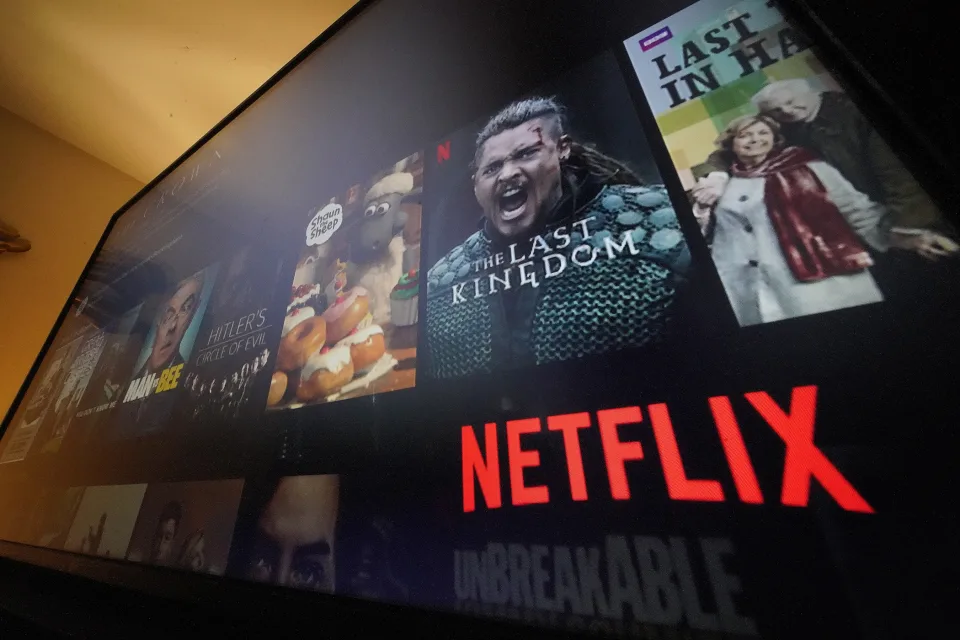Netflix (NFLX) is diving deeper into gaming. During TechCrunch Disrupt earlier this week, VP of gaming Mike Verdu said it’s “seriously exploring a cloud gaming offering.”
Sounds like a surefire win right? Not necessarily. Take a look at Google (GOOG, GOOGL), which announced last month it’s axing its own cloud gaming service Stadia due to a lack of players.
Cloud gaming is still in its early stages. It requires huge infrastructure, no latency, and plenty of games. Consumers generally tolerate a bit of lag when starting up a show, but that won’t fly with cloud gaming. Even the slightest slowdown or lag in your connection can ruin your gaming experience. And while Netflix is a massive organization with huge resources at its disposal, even that isn’t enough to win over gamers
“Google has a lot of things theoretically in place that would make you think they could succeed at a cloud streaming gaming service,” IDC research director of gaming, eSports and VR/AR Lewis Ward told Yahoo Finance. “Even [Amazon’s] (AMZN) Luna, 18 months past its official launch date, isn’t exactly crushing it either with all of Amazon’s resources.”
He added, “So I just think it’s very tough to make these things succeed.”
Cloud gaming is more difficult than streaming movies
While cloud gaming might be a powerful way to keep customers from ditching their subscriptions when they finish their favorite shows, running a successful cloud gaming business poses major challenges.
Cloud gaming allows users to stream games to low-powered devices like Chromebooks, phones, and smart TVs. The latency issue can be huge. Imagine you’re in a tense standoff with another player and just as you’re about to make your move, your connection freezes for two seconds. Next thing you know, your character is dead and the 11-year-old you were playing is laughing at you in your headset.
Even if companies have the technology, success in cloud gaming has proven relatively elusive.
Microsoft (MSFT) and Nvidia (NVDA) seem to be performing well in the area, though they don’t release exact user numbers. Microsoft’s cloud games augment its library of downloadable games, giving users more options to play and a better reason to stick around. Nvidia lets you stream games you already own.
Both services essentially give you the option of playing games on your console or PC and then jumping to the cloud when you don’t have an available TV or are on the go.
Still a growth opportunity
If Netflix does get into cloud gaming, it’s going to need to ensure it has the technology to do so, and provide gamers with something akin to Microsoft or Nvidia’s services.
But if Netflix can pull it off, a cloud gaming offering could boost a company that’s just now pulling out of a post-COVID tailspin that sent customers fleeing and shares plummeting 57% over the last 12 months.
During the pandemic, when millions became one with their couches, Netflix saw its user numbers explode. In the first quarter of 2020, the company had 182.86 million global subscribers. By the fourth quarter of 2021, it had 221.84 million. But that growth was untenable; between the first and second quarter of 2022, Netflix lost 1.17 million subscribers.
While Netflix added 2.41 million subscribers in the third quarter, it’s going to need to keep working to retain the subscribers it has. That’s where gaming comes in.
“The challenge is when the content schedule is a little more uneven, when there’s not content that people are urgently wanting to watch, that’s where you see churn tick up, and people cut off their service for a while,” Dave Heger, Edward Jones senior equity analyst, told Yahoo Finance Live.
Gaming could keep people engaged with Netflix during those lulls between show debuts. It’s not just about holding on to existing subscribers, though. Netflix could also use its cloud gaming business to attract younger consumers who are more interested in gaming than simply watching TV and movies.
“They’re looking at trends of where people are spending their entertainment time — they’re seeing gaming rise faster than linear TV shows, or streaming TV shows,,” Ward said. “And, oh, by the way, the demographics looking forward are going to favor gaming in the sense that those users tend to be younger overall.”
That combination has likely led Netflix to view cloud gaming as a growth opportunity — even with its challenges.

